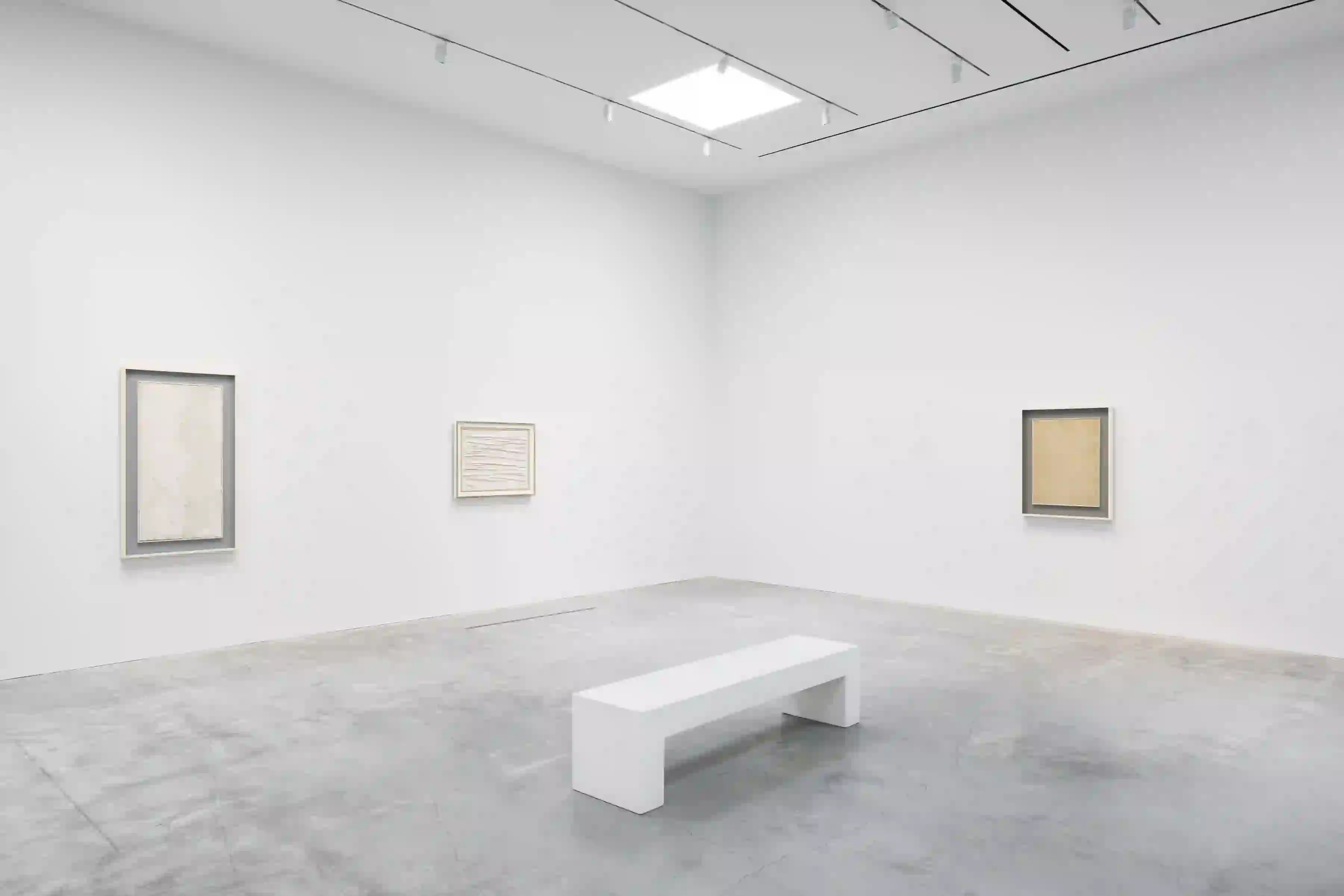Piero Manzoni: Total Space presents a focused exploration of one of the most radical artists of the postwar avant-garde in Italy. Though active for less than a decade, from the late 1950s until his death in 1963, Manzoni redefined the possibilities of art with irony, precision, and extraordinary inventiveness. This exhibition highlights his search for a total space where the boundaries between art and life, object and viewer, are continually unsettled.
At the center of the presentation are two immersive environments conceived by Manzoni in 1961: the Stanza fosforescente (Phosphorescent Room) and the Stanza pelosa (Hairy Room). Envisioned in a letter to the Dutch artist Henk Peeters, Manzoni imagined one room entirely coated in glowing fluorescent paint and another lined with synthetic fur. Left unrealized at the time of his death, these visionary projects were built more than half a century later with the assistance of architect, Stephanie Goto. Thanks to the generosity of Fondazione Piero Manzoni and Hauser & Wirth, the Rooms have been donated to Magazzino Italian Art. Both environments offer a direct experience of art as a space of transformation, challenging conventional ideas of permanence, beauty, and material value.
Surrounding these environments is a carefully selected group of Achromes, Manzoni’s celebrated series of white canvases. First created in late 1957, the Achromes demonstrate the artist’s relentless experimentation with unconventional materials such as plaster, kaolin, fur, velvet, and polystyrene. By stripping away color and narrative, Manzoni sought to construct neutral spaces where form and materiality stand on their own, free from the notion of painting as representation. These works set the stage for the total environments he would later imagine, and they reveal the consistency and breadth of his search for art as pure presence.

In addition, display cases present original journals and documents in which Manzoni elaborated his theories, along with a selection of exhibition catalogs and gallery invitations that illuminate the cultural networks he was part of. A monitor also screens four short newsreels that Manzoni prepared in collaboration with a documentary production company. In these rare films, Manzoni’s wit comes to the fore, together with his clear intention to engage with the public directly and to test the boundaries between art and its surrounding environment.
The presentation also includes an exhibition copy of Base Magica (Magical Base), a plinth designed in 1961 to transform any person who steps upon it into a living sculpture. With this gesture, Manzoni humorously yet radically questioned ideas of authorship, permanence, and the sanctity of the art object, proposing that the simple act of human presence and participation could itself become a work of art. Installed in the isotropic cube of the Robert Olnick Pavilion, this object allows visitors to participate directly in Manzoni’s original, provocative gesture.
Together, these works illustrate how Manzoni anticipated themes that would shape the trajectory of contemporary art: the use of everyday materials, the involvement of the spectator, the dematerialization of the artwork, and the merging of art and life. By situating these projects alongside Magazzino’s Arte Povera collection, Piero Manzoni: Total Space underscores Manzoni’s position as a precursor to the radical experiments that followed in Italy and beyond.
About Piero Manzoni
Born in 1933 in Soncino, a village near Cremona, Italy, as Count Manzoni di Chiosca e Poggiolo, Piero Manzoni grew up in Milan and was largely self-taught as an artist. He made his debut in 1956 in Soncino and later at the San Fedele Painting Prize in Milan, showing a selection of paintings with anthropomorphic motifs. In the following years he signed manifestos with fellow artists, exhibited widely, and briefly joined the Movimento Arte Nucleare.
Between 1957 and 1958, Manzoni created his first Achromes—white canvases freed from representation—and soon after exhibited them in the group show Baj Manzoni Fontana in Bologna. In 1959, together with Enrico Castellani, he co-founded the journal Azimuth and the Milan gallery Azimut, establishing a platform for new experimental practices.
From this period onward, Manzoni produced increasingly conceptual works. He interacted with avantgarde groups such as the ZERO Group in Northern Europe, and frequently exhibited abroad. His Linee (Lines) suggested drawings of infinite extension, while other works focused on the body and authorship. In his Corpi d’aria (Bodies of Air), balloons could be inflated by the artist himself—becoming Fiato d’artista (Artist’s Breath)—or by anyone else. In 1960, in the performance Consumazione dell’arte / Dinamica del pubblico / Divorare arte, he invited spectators to eat hard-boiled eggs stamped with his thumbprint.
Manzoni died of a heart attack in his Milan studio in 1963, at the age of 29. Despite his brief career, his radical rethinking of the artwork, the artist’s role, and the viewer’s participation made him one of the most influential figures of the postwar avant-garde. He left an indelible mark on the development of conceptual art, performance art, and Arte Povera.
